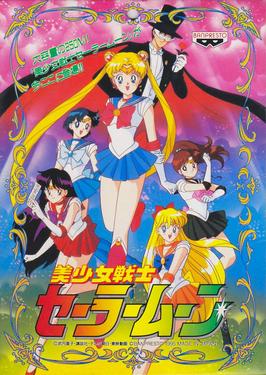
Final Fight is a 1989 beat 'em up video game developed and published by Capcom for arcades. It is the seventh title released for the CP System hardware. Set in the fictional Metro City, the player controls one of three street fighters: former pro wrestler and city mayor Mike Haggar, expert brawler Cody Travers, and modern-day ninja Guy. The trio set out to rescue Jessica when she is kidnapped by the Mad Gear Gang.
An action game is a video game genre that emphasizes physical challenges, including hand–eye coordination and reaction time. The genre includes a large variety of sub-genres, such as fighting games, beat 'em ups, shooter games, rhythm games and platform games. Multiplayer online battle arena and some real-time strategy games are also considered action games.

Kung-Fu Master, known as Spartan X in Japan, is a 1984 beat 'em up game developed and published by Irem for arcades. It was distributed by Data East in North America. Designed by Takashi Nishiyama, the game was based on Hong Kong martial arts films. It is a loose adaptation of the Jackie Chan, Sammo Hung and Yuen Biao film Wheels on Meals (1984), called Spartan X in Japan, with the protagonist Thomas named after Jackie Chan's character in the film. The game is also heavily inspired by the Bruce Lee film Game of Death (1972), which was the basis for the game's concept. Nishiyama, who had previously designed the side-scrolling shooter Moon Patrol (1982), combined fighting elements with a shoot 'em up gameplay rhythm. Irem and Data East exported the game to the West without the Spartan X license.

Hyper Dyne Side Arms is a 1986 side-scrolling shooter video game developed and published by Capcom for arcades. The player takes control of a flying mecha fighter who must battle an alien army. Side Arms uses a two-directional attacking system similar to Capcom's previous shoot-'em-up Section Z.

Alien vs. Predator (エイリアンVSプレデター) is a 1994 beat 'em up video game developed and released by Capcom for the CPS-2 arcade game system. It is based on the science fiction franchise of the same name. Introducing an original fighter to the game: Lt. Kurosawa, the players take control of up to three from the selection of four cyborgs and Predator characters in a battle against the Xenomorph hordes and rogue human soldiers.

Dungeons & Dragons: Shadow over Mystara is an arcade game developed and published by Capcom in 1996 as a sequel to Dungeons & Dragons: Tower of Doom. The game is set in the Dungeons & Dragons campaign setting of Mystara.

Dungeons & Dragons: Tower of Doom, published in 1994, is the first of two arcade games created by Capcom based on the Dungeons & Dragons tabletop role-playing game and set in the Mystara campaign setting. It is a side scrolling beat 'em up with some role-playing video game elements for one to four players. The game was also released on the Sega Saturn, packaged with its sequel, Dungeons & Dragons: Shadow over Mystara, under the title Dungeons & Dragons Collection, although the Saturn version limited the gameplay to only two players. In 2013, both games were re-released for PlayStation 3, Windows, Xbox 360 and Wii U as Dungeons & Dragons: Chronicles of Mystara.

Warriors of Fate, known in Japan as Tenchi wo Kurau 2: Sekiheki no Tatakai, is a 1992 beat 'em up video game developed and published by Capcom for arcades. It is the second video game based on the Tenchi wo Kurau manga, following Dynasty Wars. It was ported to the Sega Saturn and PlayStation in 1996. A version for mobile phones followed in 2005. Capcom later included an emulated version of the arcade original as part of Capcom Arcade Stadium and Capcom Beat 'Em Up Bundle.

Mighty Final Fight is a side-scrolling beat-'em-up released by Capcom for the Nintendo Entertainment System in 1993. It is a spinoff of Capcom's 1989 arcade game Final Fight, which was previously ported to the Super NES. Unlike the CP System arcade classic and its SNES ports, the characters in this edition are depicted in a comical childlike "super deformed" or "chibi" art style in the same spirit as Famicom games such as both Konami's Kid Dracula and Namco's Splatterhouse: Wanpaku Graffiti.
A beat 'em up is a video game genre featuring hand-to-hand combat against a large number of opponents. Traditional beat 'em ups take place in scrolling, two-dimensional (2D) levels, while a number of modern games feature more open three-dimensional (3D) environments with yet larger numbers of enemies. The gameplay tends to follow arcade genre conventions, such as being simple to learn but difficult to master, and the combat system tends to be more highly developed than other side-scrolling action games. Two-player cooperative gameplay and multiple player characters are also hallmarks of the genre. Most of these games take place in urban settings and feature crime-fighting and revenge-based plots, though some games may employ historical, science fiction or fantasy themes.

Knights of the Round is a 1992 beat 'em up video game developed and published by Capcom for arcades. Based loosely on the legend of King Arthur and the Knights of the Round Table, the game features an action role-playing video game-like level advancement system, with fighters automatically being upgraded to new weapons and armor as they advance through the game. The arcade edition of the game was included in Capcom Beat 'Em Up Bundle and Capcom Arcade 2nd Stadium.

Cyberbots: Fullmetal Madness is a 1995 fighting game developed and published by Capcom for arcades. It is a spin-off of the beat 'em up game Armored Warriors and consists of versus battles between mechas, each with their own human pilots. Built on the CP System II arcade board, it saw limited distribution in arcades outside Japan; the game was ported to the Sega Saturn and PlayStation home consoles domestically featuring additional content. With the exception of an untranslated PlayStation Network release in 2011, none of the console ports were released overseas. The arcade version of Cyberbots: Fullmetal Madness was released as part of Capcom Arcade Stadium and Capcom Fighting Collection. The game was succeeded by Tech Romancer (1998).

Battle Circuit is a 1997 beat 'em up video game developed and published by Capcom for arcades. It was released in Japan and Europe. Taking place in an alternate future earth, the game revolves around a group of bounty hunters who must capture the mad scientist Dr. Saturn and secure a sophisticated computer disc carrying a program known as the "Shiva System". The game contains comic-like characters in a futuristic science fiction setting. Battle Circuit was Capcom's last beat 'em up game developed for the arcades. The game made its home console debut in Capcom Beat 'Em Up Bundle and was also re-released in Capcom Arcade Stadium.

The Punisher is a 1993 beat 'em up arcade game developed and released by Capcom. It stars the Marvel Comics' antihero the Punisher and co-stars S.H.I.E.L.D. agent Nick Fury as the second player's character as they embark on a mission to kill the crime lord the Kingpin and bring down his organization. While following the same general formula as Capcom's previous beat 'em ups, the game has a range of usable weapons and a comics-style presentation.

The King of Dragons is a 1991 beat 'em up video game developed and published by Capcom for arcades. It follows players as they control characters through the kingdom of Malus to defeat monsters led by the dragon Gildiss. It features a level advancement system, allowing character attributes to be upgraded as players progress through the game. The game's music was composed by Yoko Shimomura.

Rohga: Armor Force, released in Japan as Wolf Fang: Kuuga 2001, is a 1991 run and gun/platform hybrid arcade game developed and published by Data East. It is branded as a sequel to Vapor Trail and was itself followed by Skull Fang.

Captain Commando is a 1991 beat 'em up video game developed and published by Capcom for arcades. It was the seventeenth game produced for the company's CP System hardware. The game stars the titular superhero who was originally conceived as a fictional spokesman used by Capcom USA in the company's console games during the late 1980s. The game was included in Capcom Beat 'Em Up Bundle compilation title, which was released digitally for Nintendo Switch, PlayStation 4, Xbox One, and Windows in September 2018.

Capcom Beat 'Em Up Bundle is a 2018 video game compilation developed and published by Capcom. Featuring emulated versions of various beat 'em up video games from Capcom's history, it was released for Nintendo Switch, PlayStation 4, and Xbox One in September 2018, with the game being released for Windows later in October. A physical release occurred in Japan on December 6 for PlayStation 4 and Nintendo Switch.

Pretty Soldier Sailor Moon is a side-scrolling beat 'em up arcade video game developed by Gazelle and released in March 1995. It was published by Banpresto. It is the first game to be created by Gazelle, one of the offshoots of defunct developer Toaplan that were founded after they declared bankruptcy in 1994, and one of the few titles based upon Naoko Takeuchi's Sailor Moon shōjo manga and anime series that had an official international release, and it also has been compared with other titles in the same genre such as Capcom's Final Fight and Technōs Japan's Double Dragon.

Capcom Arcade Stadium is a 2021 video game compilation developed and published by Capcom. It includes 32 arcade games originally published by Capcom between 1984 and 2001; the game itself is free to download with a single free game, while the others require individual purchases. The compilation was initially released on Nintendo Switch, then on PlayStation 4, Windows, and Xbox One, and later Amazon Luna. A second compilation, Capcom Arcade 2nd Stadium, was released in 2022.


















